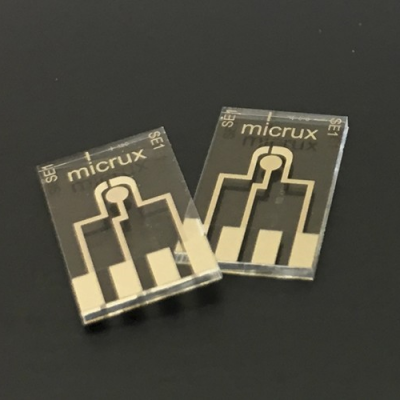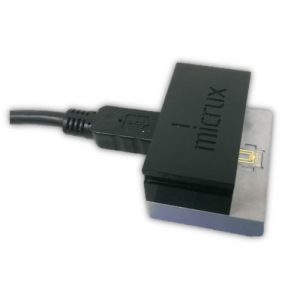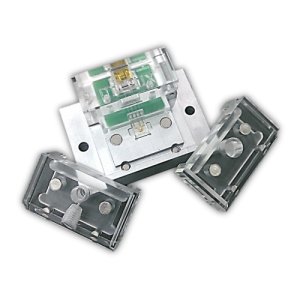Micrux ED-mSE Thin-film microelectrode Arrays
MEA electrodes are based on pinholes with a honeycomb microstructure. This thin-film sensor’s working electrode is covered with a photo resist that has 5 or 10 µm pinholes that form an array of ultramicroelectrodes. They show the microelectrode behaviour enhancing sensitivity and detection limits by reaching the steady state rapidly.
The Micrux Thin-Film electrodes are reusable and need only 1 to 5 µL measuring solution to be operated. The microelectrode arrays are available with platinum or gold electrodes. The WE material is sputtered on a 50 nm thick layer of titanium and has a thickness of 150 nm, which is sufficient to show bulk behavior. The pinholes forming the ultramicroelectrodes have a diameter of 5 or 10 µm and the distance between the holes is 100 µm.
- Ultramicroelectrode with a diameter of 5 µm has 500 pinholes
- Ultramicroelectrode with a diameter of 10 µm has 90 pinholes

Micrux ED-mSE Thin-film microelectrode Arrays
Features
- Working electrode based on pinholes with honeycomb structure
- Individual reference and an auxiliary electrode
- Platinum or Gold electrodes
Specifications
| WE material | Gold, Platinum |
|---|---|
| Surface modification | Blank |
| Brand | Micrux Technologies |
| Amount of WEs | 1 |
| CE material | Platinum, Gold |
| Electrode system | CE + RE+ WE |
| Combined RE and CE | No |
| Ø of the disc WE / mm | 1 |
| WE geometric area | 0.79 mm² |
| RE material | Platinum |
| Support material | Glass |
| Support dimensions / mm | 10 by 6 |
| Possible analytes | Variousnaphthol, dopamine, metals, para-aminophenol, arsenic, metal complexes |
| Possible applications | Electrolysis, Modifictaion with biomolecules (e.g. immunosensor, DNA), self-assembled monolayers (thiol on gold) or similar, Detection of redox active species |
| Pinhole diameter | 10 um, 5 um |
Manufacturers
show DATA — DO NOT CHANGE ID–
Industries
show DATA — DO NOT CHANGE ID–



